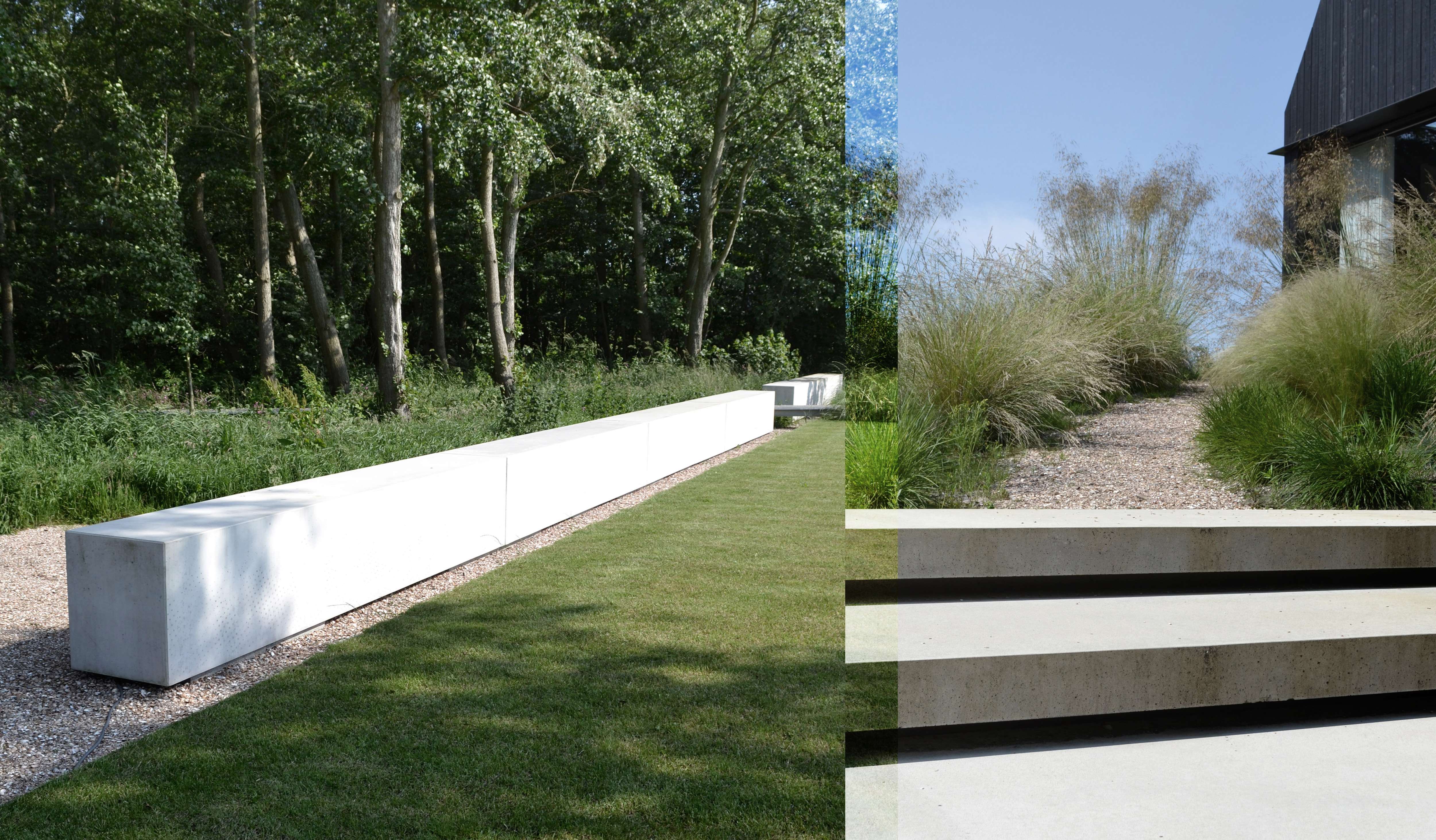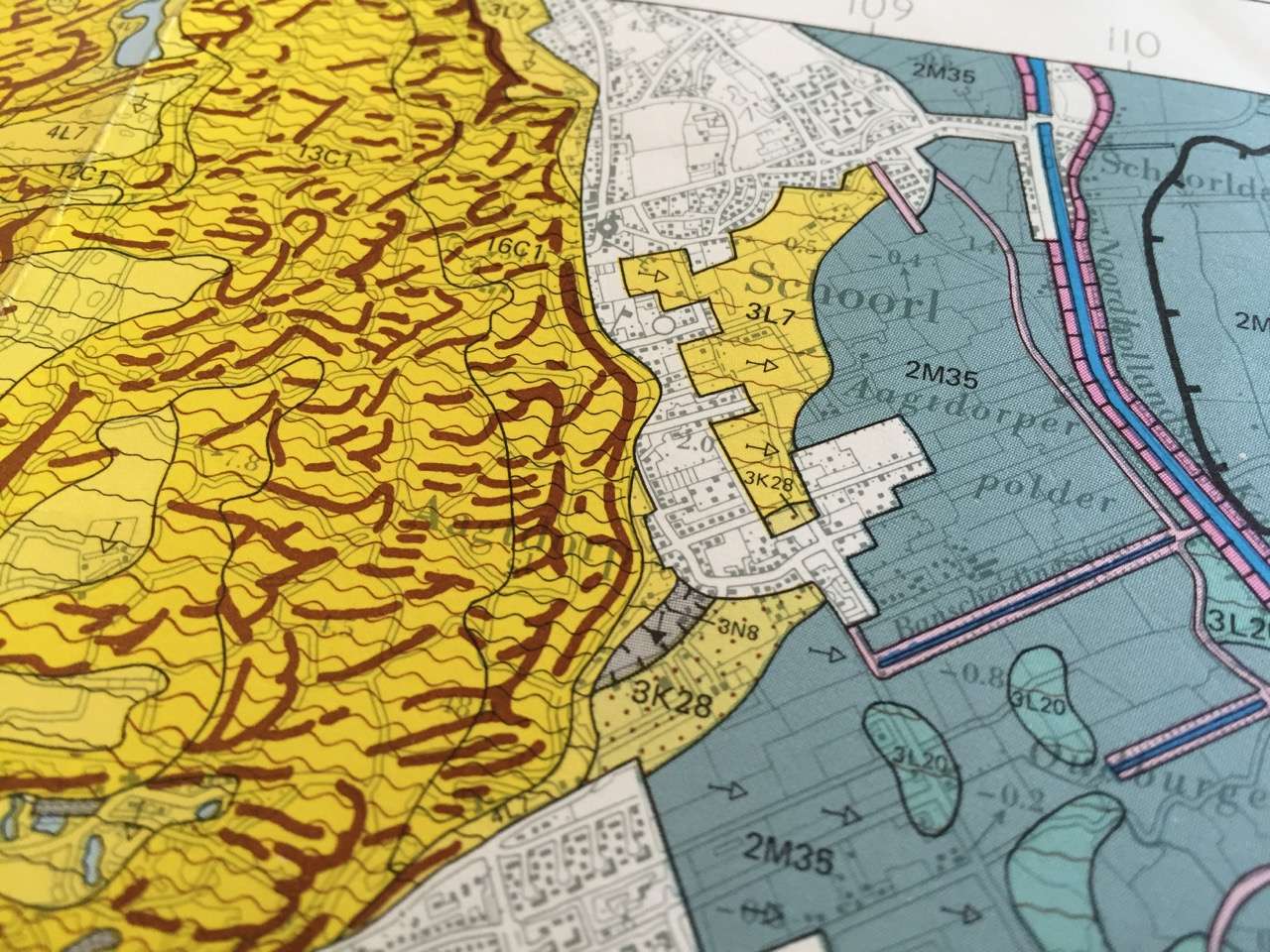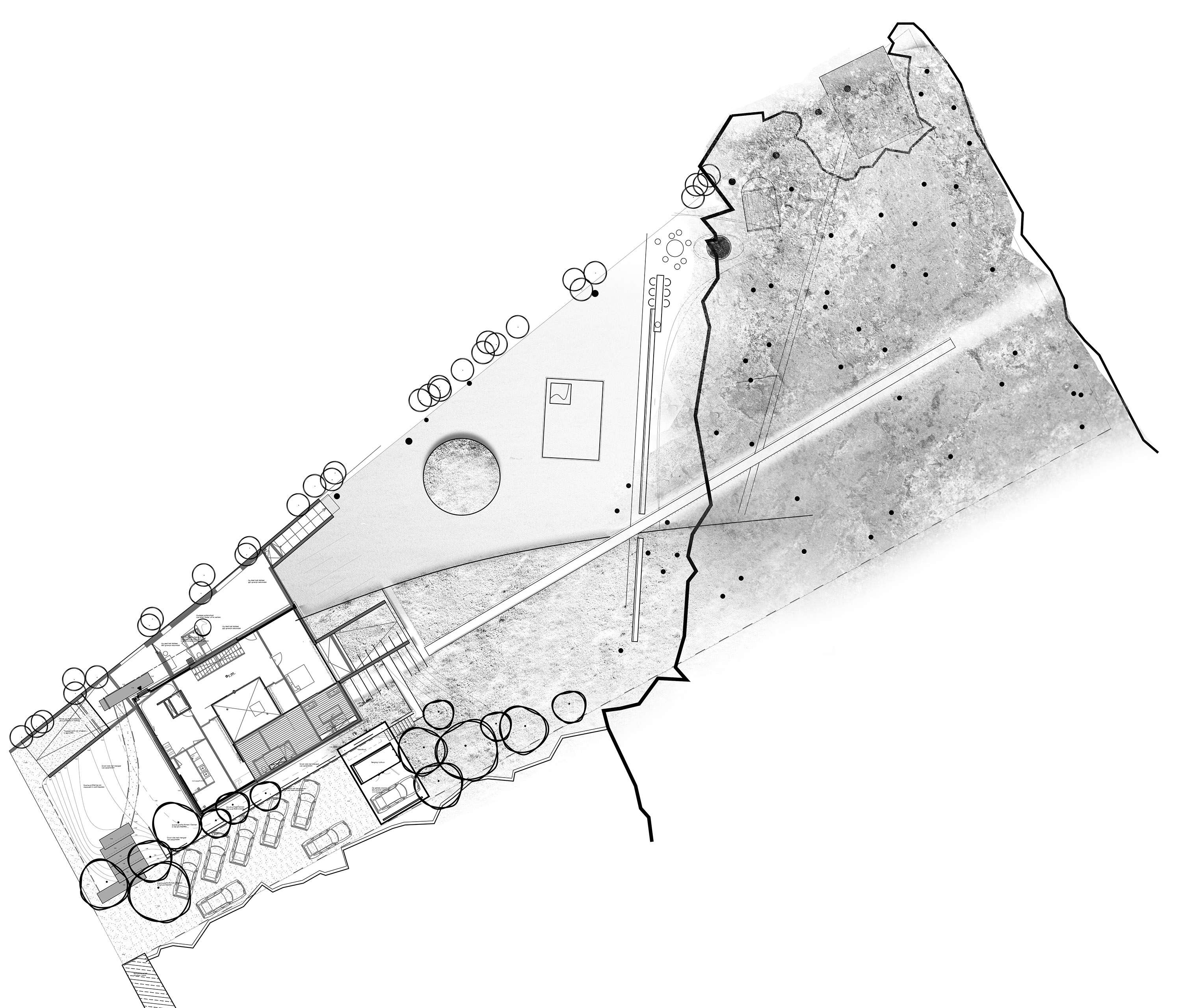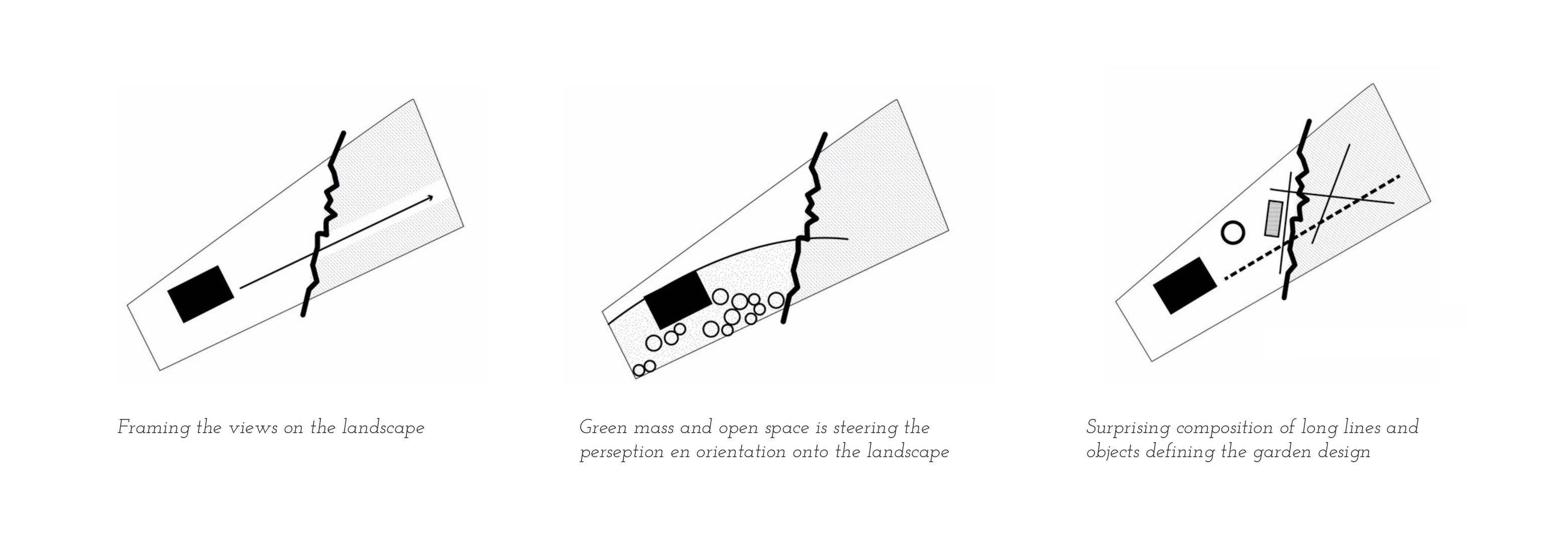



Anticipating the landscape
Anticipating the landscape
Anticipating the landscape
This garden embraces a fascinating residence in the poetic landscape of Schoorl in The Netherlands. Linking it with the landscape is an important aspect in this work. Together with the more wild and ecosystem focussed approach of the flora, this garden is resilient and adaptive, strengthening the bigger natural system.
The plot is located in the bocage landscape behind the broad dunes. In the evening, the light of the sun projects on the high dune over the dark forest facade giving a magical experience as it illuminates every landscape room. From the house, long lines and scenes steers ones orientation to the surrounding landscape. The garden does not stop at the boundaries, but continues into the pastures next to it.
What makes this garden even more special is that it lies on a subtle landscape transitioning from the higher sandy soils to the lower peat meadows, which are part of the hinterland. On the lower wetter part of the garden you find the Alder forest with its characteristic play of tall slim trunks. This story of the landscape transition is now more visible and experienced more strongly through the design. It's the composition of the long lines that frame the views onto the landscape. In the same time these long lines connects the bigger scale of the landschap to the smaller, human scale of the dwelling.
The story of the landscape can be found in several layers of the desing. The emotion of the planting revers to the original landscape. A strong base of native plants in combination with cultivated, non-invasive plant give this garden a sense of place. The materials used refer to the nearby beach and last but not least the graphic in the concrete elements revers to moving dunes along the nearby coast line. This patterns is designed by Studio BLAD who also functioned as a sparring partner in the desing proces.
The composition of the long lines and minimalistic details is in contrast with the lush nature. It organises the space without the need to organise the flora. Because of that the flora can flourish in its natural form. The form that connects to the existing surrounding ecosystem. In stead of a domesticated garden often seen recent history, this garden is a garden that connects to a future we should embrace if we look at the emerging problem surrounding climate change and biodiversity decay. We should not work against nature but collaborate with nature. Be humble and be more like a guest in the landscape…
Design sand blasted pattern concrete element: Studio BLAD
Photography: Andrew van Egmond
Green constructor: Kroeze Hoveniers Beesd
Trees by: Van der berk
Lighting by: Burlight
Architect main dwelling Paul de Ruiter
